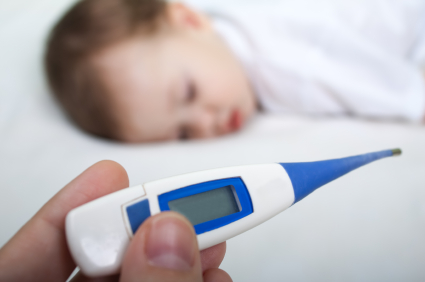
Community Education-Febrile Seizures
Welcome to the November issue of Community Education. This month we would like to bring some attention to febrile seizures since it is cold and flu season. Febrile Seizures are especially common in small children who are getting sick and running high fevers. We will talk about what febrile seizures are, what to look for, and treatment/preventions available.
What is a febrile seizure?
A febrile seizure is a convulsion type event that happens in children when the body becomes too hot during a fever. The child does not have to have a predisposition to seizures to experience these types of seizures. For parents, this can be very frightening as you do not want to see your child seizing at all. Usually, they are harmless and do not point to a more serious problem other than the child experiencing a high fever from an infection or other illness.
In general, seizures are a result of too much or too little electrical activity in the brain and the imbalance of activity releases chemicals that cause a surge of electrical activity to correct the imbalance. This results in a seizure.
What are the Symptoms of Febrile Seizures?
Most people think that a seizure is the violent shaking and thrashing as exemplified on TV. This is not always the case. Febrile seizures can manifest in different ways pending if they are simple or complex in nature.
Simple Febrile Seizures: This most common type lasts from a few seconds to 15 minutes. Simple febrile seizures do not recur within a 24-hour period and are not specific to one part of the body.
Complex Febrile Seizures: This type lasts longer than 15 minutes, occurs more than once within 24 hours or is confined to one side of your child’s body.
Both types of seizures are also accompanied by a fever of approx. 100.4 degrees, loss of consciousness, and jerking of the body. Again, it is not just violent shaking and could be just a twitch type movement.
What are some Treatments of Febrile Seizures?
If your child is experiencing any of the above symptoms and you suspect a febrile seizure is taking place, CALL 911! While awaiting the ambulance, it is a good idea to try to actively cool the child. Removing clothing and putting them in the coolest room in the house is a great first step. Remove any sharp or hard objects from around the child so they will not flail into them causing other injuries. Most importantly, SEIZURES ARE INVOLUNTARY so do not restrict the child’s movement as this can cause other injuries as they “fight” against it. The seizure may stop prior to EMS arriving to you but that does not mean it could not happen again and it is highly recommended that your child is seen at the ER.
Sources:
For more information please visit:
https://www.mayoclinic.org/diseases-conditions/febrile-seizure/symptoms-causes/syc-20372522
